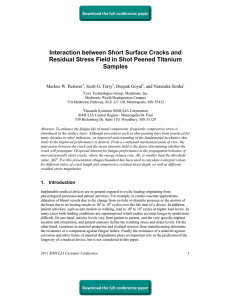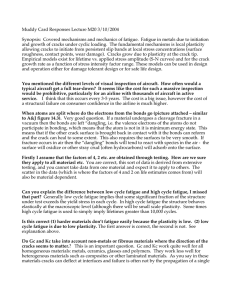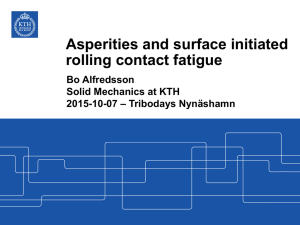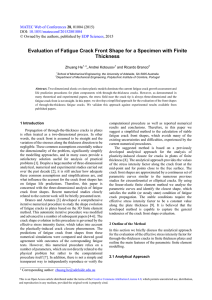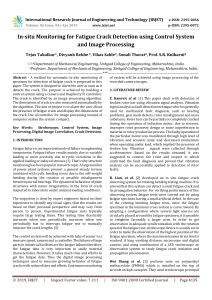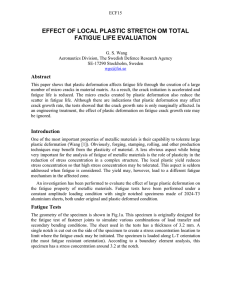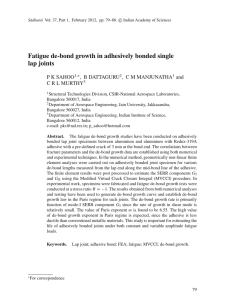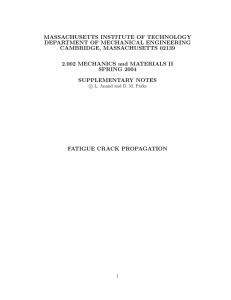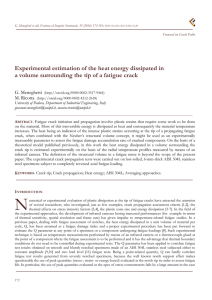3.35 Problem Set #5 Assigned: 11/6/03 Due: 11/13/03 in class
advertisement
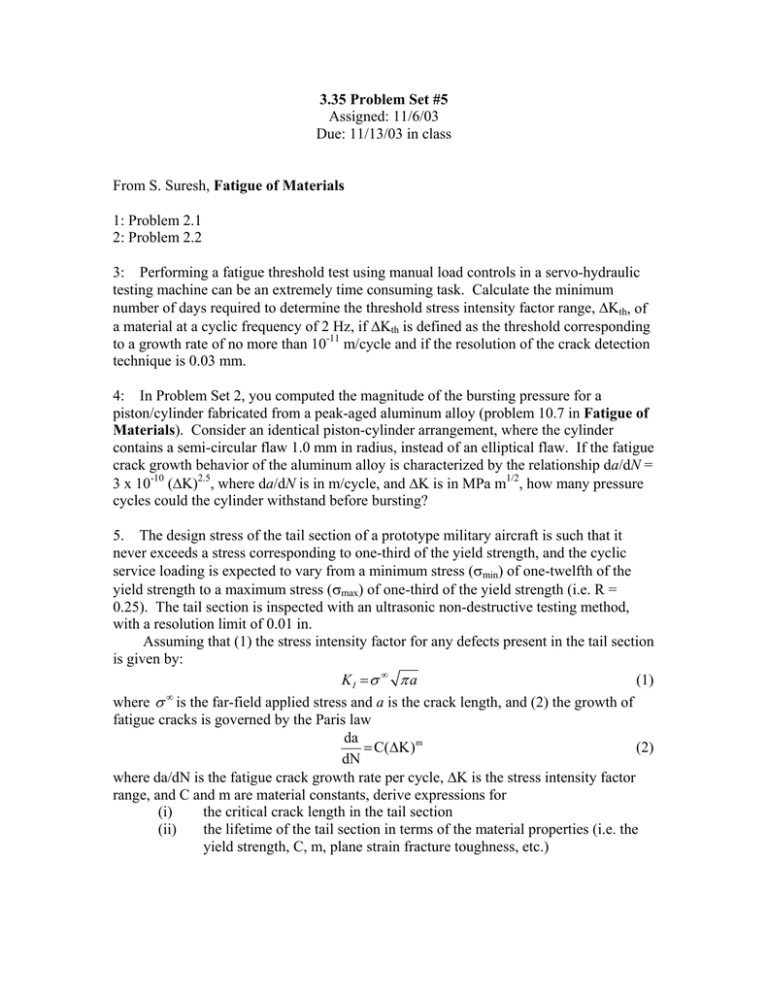
3.35 Problem Set #5 Assigned: 11/6/03 Due: 11/13/03 in class From S. Suresh, Fatigue of Materials 1: Problem 2.1 2: Problem 2.2 3: Performing a fatigue threshold test using manual load controls in a servo-hydraulic testing machine can be an extremely time consuming task. Calculate the minimum number of days required to determine the threshold stress intensity factor range, ∆Kth, of a material at a cyclic frequency of 2 Hz, if ∆Kth is defined as the threshold corresponding to a growth rate of no more than 10-11 m/cycle and if the resolution of the crack detection technique is 0.03 mm. 4: In Problem Set 2, you computed the magnitude of the bursting pressure for a piston/cylinder fabricated from a peak-aged aluminum alloy (problem 10.7 in Fatigue of Materials). Consider an identical piston-cylinder arrangement, where the cylinder contains a semi-circular flaw 1.0 mm in radius, instead of an elliptical flaw. If the fatigue crack growth behavior of the aluminum alloy is characterized by the relationship da/dN = 3 x 10-10 (∆K)2.5, where da/dN is in m/cycle, and ∆K is in MPa m1/2, how many pressure cycles could the cylinder withstand before bursting? 5. The design stress of the tail section of a prototype military aircraft is such that it never exceeds a stress corresponding to one-third of the yield strength, and the cyclic service loading is expected to vary from a minimum stress (σmin) of one-twelfth of the yield strength to a maximum stress (σmax) of one-third of the yield strength (i.e. R = 0.25). The tail section is inspected with an ultrasonic non-destructive testing method, with a resolution limit of 0.01 in. Assuming that (1) the stress intensity factor for any defects present in the tail section is given by: KI =σ ∞ π a (1) ∞ where σ is the far-field applied stress and a is the crack length, and (2) the growth of fatigue cracks is governed by the Paris law da = C(∆K) m (2) dN where da/dN is the fatigue crack growth rate per cycle, ∆K is the stress intensity factor range, and C and m are material constants, derive expressions for (i) the critical crack length in the tail section (ii) the lifetime of the tail section in terms of the material properties (i.e. the yield strength, C, m, plane strain fracture toughness, etc.)


